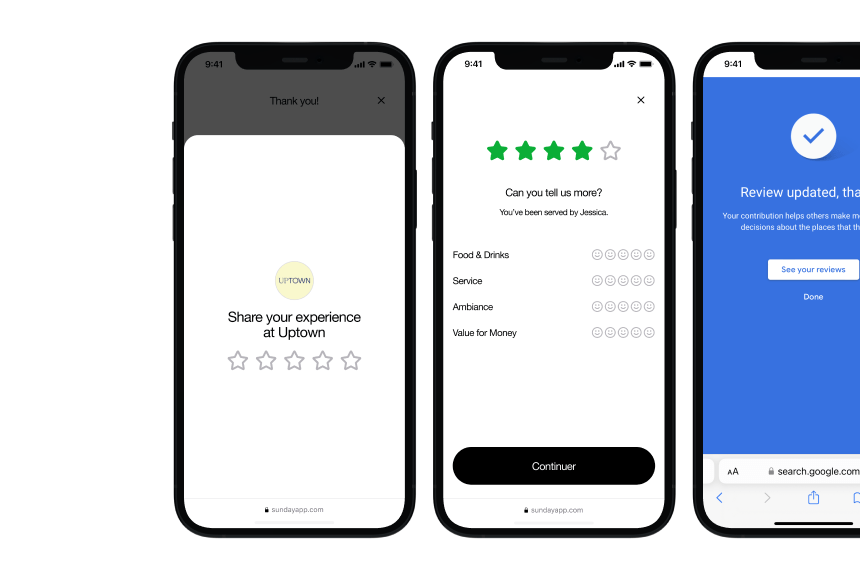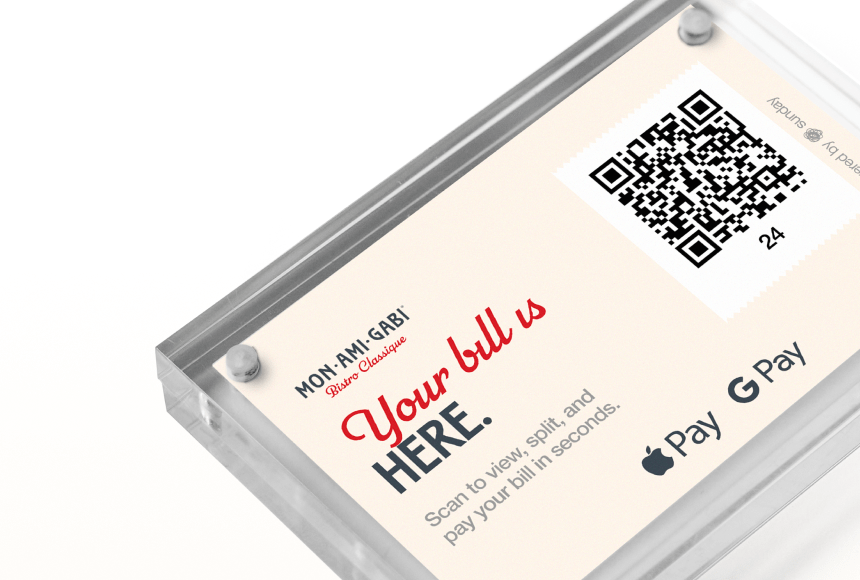
Bringing Guest Feedback to Life: Proven Methods for Restaurant Success
Why Online Ratings Matter More Than Ever
As a restaurant owner, you already know that feedback is everywhere. From Yelp to Google to social media, guests share their opinions right after they bite into your specialty dish. According to a 2019 survey by BrightLocal, 82% of consumers read online reviews when searching for a local business. And in the restaurant industry, that number likely skews even higher—food is personal, and people want to be sure they’re making the right choice.
This means ratings are more than just vanity metrics: they affect your bottom line. In a Harvard Business School study, researchers discovered a one-star jump on Yelp can lead to a 5–9% increase in revenue. Your star rating can literally put more money on the table.
But how do you use ratings to your advantage? It’s not enough to pay attention only when you see a four or five-star recommendation. Whether they’re glowing or scathing, online reviews can be a goldmine for improvements—if you handle them strategically.
Gathering Reviews: Where and How
To transform your ratings into an engine for progress, you first have to collect them. Most owners rely on the “usual suspects”:
- Search Engine Platforms: Google Business Profile is a major source of visibility—especially when customers are searching for a place to eat nearby.
- Review Websites: Yelp, TripAdvisor, and OpenTable are popular hubs. These platforms are particularly powerful if you’re in a tourist-heavy area.
- Social Media: Platforms like Facebook and Instagram can serve as both marketing and feedback channels. Direct messages and post comments often reveal what guests love—or hate.
If you want deeper insights, you can also survey your diners directly. Some restaurants use short feedback forms or comment cards at the end of the meal. Others opt for quick digital surveys. With contactless payment solutions (like sunday’s QR code), you can seamlessly integrate a follow-up for reviews or tips—and direct guests to share their experiences on Google or social media. By proactively gathering feedback, you can reach your most loyal fans and your most disappointed customers with equal attention.
The Art of Interpreting Feedback
So, you’ve got your ratings and plenty of comments—now what? The art of turning raw feedback into actionable insights lies in reading between the lines. Here’s the trick: each review, whether it’s a 2-star rant or a 5-star rave, deserves a closer look.
- Look for Patterns: One negative comment about slow service might be an isolated incident. Five or six of the same complaint? It’s a red flag that your table management or staffing strategy needs attention.
- Break It Down by Area: Group feedback by categories like food quality, service speed, ambience, cleanliness, or price. This helps you pinpoint which segments of your operation require improvement.
- Pay Attention to Your Core Strengths: Nobody wants to overlook the bad, but don’t neglect the good. You might discover your homemade sauces or your warm table-side greetings are a consistent “wow” factor. Emphasize these strengths in your marketing and staff training.
Analytical tools can help you parse through large amounts of data. Some platforms compile reviews and highlight common keywords. For instance, if “long wait” or “overcooked pasta” pop up multiple times, you know to drill down on those. Quick tip: keep a spreadsheet to track recurring feedback topics, how often they appear, and whether you’ve addressed them.
Converting Negative Comments into Growth
Let’s be honest—negative feedback stings. But it’s also some of the most valuable input you can get. For each critical review, consider these steps:
- Acknowledge the Issue: Respond publicly with empathy. For example, “We’re truly sorry your salmon was undercooked. We appreciate your candor and are working to ensure this does not happen again.” Your guests want to feel heard, not brushed off.
- Rectify and Recover: Invite the guest to return or offer a small gesture of goodwill (like a free appetizer) to show you’re serious about long-term satisfaction. This can sometimes convert an annoyed customer into a loyal fan.
- Analyze the Root Cause: Is the issue happening when you’re understaffed? Are your cooking times too rigid for certain dishes? By identifying the root cause, you can reduce the chance of a repeat complaint.
Negative feedback can serve as a wake-up call. If multiple guests point out that your décor is dated, that’s an opportunity to freshen up the dining area. If they consistently mention cold plates arriving late, you might need to add more servers or invest in warming trays. Remember to thoroughly document these changes so you have a record of your improvement process.
Tools to Streamline Feedback Management
Handling feedback is not just about logging in to Yelp and responding to a comment here and there. It’s about having a systematic approach that ensures no feedback gets lost in the shuffle. Here are a few tools and methods to consider:
- All-in-One Review Platforms: Some services centralize feedback from Google, Yelp, Facebook, and other channels into a single dashboard. This helps you stay on top of everything without juggling multiple tabs.
- Contactless Feedback and Payment Solutions: With modern payment solutions like sunday, your diners pay via a QR code and can be prompted to leave comments or star ratings on the spot. This approach drastically cuts down friction. Think of it as a moment where your satisfied guests are still savoring your dessert—and more inclined to leave a glowing review.
- Customer Relationship Management (CRM): While CRMs are more common in big companies, certain systems are tailored for small and mid-sized restaurants. You can log all visitor interactions and track who’s a repeat customer, who left a review, and what they said.
- Automated Email or Text Surveys: Quickly ask about their dining experience after they leave. Keep it short—no one wants a 50-question exam about a sandwich.
Using technology doesn’t have to be complicated. The simpler you make your feedback channels, the higher your response rate will be. Your goal is to find a system that captures, organizes, and helps you respond to reviews in a timely manner.
Turning Ratings into Real-World Enhancements
Once you’ve collected and analyzed your ratings, it’s time to make tangible improvements. Here’s a little table for inspiration, showing examples of common feedback and how to convert them into immediate or strategic actions:
| Feedback | Action | Outcome |
|---|---|---|
| “My steak was too pink.” | Review cook times; retrain on internal temperature checks | More consistent doneness; happier meat-lovers |
| “We waited 30 minutes to order.” | Hire an additional server; improve table assignment process | Reduced wait times; faster table turnover |
| “The dining room felt cramped.” | Revisit layout; remove unnecessary furniture | Enhanced guest comfort; more pleasant atmosphere |
| “Prices seem high.” | Reevaluate portion sizes; introduce a more budget-friendly lunch menu | Better value perception; broader market appeal |
Improvements like these aren’t just about problem-solving; they’re also fantastic talking points for your marketing. Imagine announcing on social media that you’ve updated your furniture layout based on customer feedback. You convey that you listen, care, and act on what people say.
Perhaps the biggest benefit of focusing on feedback-based enhancements is that it saves you guesswork. Instead of guessing what might impress your guests, you use actual reviews to guide your decisions.
A Culture of Continuous Feedback
Improving your restaurant based on ratings isn’t a one-time effort. It’s a cycle that happens over and over. When you cultivate a culture of continuous feedback, you transform your restaurant into a thriving, data-informed space. But how do you keep the momentum going so you don’t slip back into old habits?
- Empower Your Team: Bring servers, hosts, and back-of-house staff into the loop on recent reviews. A quick weekly meeting can reveal what’s going right or wrong. Think of it like a team huddle in sports: you’re all in this together, so everyone needs to know the play.
- Recognize Good Work: Don’t just highlight the complaints. When staff see positive comments about someone’s extra-friendly service or well-executed plating, celebrate it. This boosts team morale and encourages them to keep it up.
- Set Measurable Goals: Maybe your current overall rating is 3.8 stars. Aim for 4.2 within three months. Share this goal, track progress, and adjust as needed. Goals keep everyone motivated, turning ratings into a collective ambition rather than another random statistic.
- Listen Beyond the Numbers: Ratings are helpful, but sometimes the unscored feedback—like a private comment from a guest or a conversation with a regular—reveals deeper truths. Stay approachable. Encourage guests to speak directly to managers or staff if they have time-sensitive concerns. A last-minute table change for a guest in a wheelchair, or a quick note about a child’s allergy, can make all the difference in a positive experience.
Keeping an Eye on Trends and Competition
In any bustling restaurant market, it’s easy to get tunnel vision. You focus so intensely on your own operation that you forget to see how trends shift or how your competitors are performing. In the world of ratings and reviews, this broader perspective actually offers valuable insights:
- Social Listening: Monitor mentions of your restaurant on Twitter, Instagram, and Facebook to understand the social sentiment beyond formal review platforms. Tools like Brand24 or Hootsuite help compile mentions to keep you in the loop.
- Competitive Analysis: Glance at your competitors’ rating pages. Are they praised for something you lack—like a cozy ambiance or creative cocktail menu? Adapting strengths from the competition can help you stand out in your own unique way.
- Industry Data: Resources such as Restaurant.org keep you informed on national dining trends. Watching how overall consumer preferences evolve can help you anticipate what guests might look for a few months down the line.
Staying current isn’t about copying others. It’s about identifying new ways to refine your unique brand. If you see a wave of diners searching for more plant-based options—and your reviews mention limited vegetarian fare—you know it’s time to revisit that aspect of your menu.
Nurturing Loyal Guests and Attracting New Ones
When handled correctly, ratings become a marketing tool. Glowing reviews and improved star ratings attract new customers. Meanwhile, personalized responses to unhappy guests can salvage what might have been a lost relationship, potentially turning them into lifelong fans. Some tips to keep in mind:
- Don’t Copy-Paste Responses: If you have a go-to template, that’s fine—but personalize each reply. A guest who compliments your “garlic-truffle fries” will notice if you mention something completely unrelated to their feedback.
- Encourage Loyalty: If someone posts a five-star review, invite them to special events or share limited-time offers. Reward people for taking the time to share their experience positively. Loyalty programs, “happy hour” deals, or subscriber-only bonuses through your newsletter can do wonders here.
- Showcase Top Reviews: Highlight a particularly glowing comment in your social media or even on your menu if it’s relevant. It’s a real statement of trust and helps new diners feel more confident about choosing your venue.
Remember, each response you post is visible to the entire world. People are often reading reviews looking for clues about your atmosphere, service, and commitment. A thoughtful, warm reply can speak volumes about how you operate beyond the kitchen.
Building a Future-Proof Operation
Responding to reviews is essential, but the real magic lies in what you do behind the scenes. If you repeatedly see mentions of inconsistent food quality, you might need to strengthen training programs, invest in better kitchen equipment, or establish more precise cooking guidelines. If guests praise certain staff members often, use that as a teaching moment—ask these star employees to mentor new hires, or to host short training sessions.
By continuously improving your operations based on real guest feedback, you future-proof your restaurant in multiple ways:
- Strong Reputation: High ratings and proactive responses build trust. Trust translates into repeat visits.
- Evolving Menu: You adjust your menu in response to preferences, allergies, and emerging trends—which helps you stay relevant in a competitive market.
- Staff Retention: When your team sees a restaurant committed to growth, it’s more rewarding. They know feedback matters, and that every shift is a chance to do better.
- Consistent Guest Experience: Reducing the gap between your promise and your delivery fosters loyalty and positive word of mouth.
Essentially, you’re laying a foundation that can stand up to shifting consumer tastes, new competitors, and even challenging economic times. It all starts with carefully listening to what your guests say and acting on it.
Elevating Your Business, One Rating at a Time
Think of every piece of feedback—each star, comment, or direct message—as an invitation to learn. When you approach reviews with curiosity and a willingness to change, you harness the potential to elevate every aspect of your restaurant. You might adopt a new reservation system, roll out a more diverse menu, or even shift your entire approach to hospitality. Whatever the change, it’s grounded in the real experiences of people who’ve sat at your tables.
The best part? An integrated solution like sunday helps close the feedback loop right where the magic happens—at the table. A guest scans a QR code, pays in seconds, and immediately has the option to leave a tip or share a review. This streamlined experience encourages genuine, in-the-moment feedback that can shape your next era of success.
So, keep hunting for those unruly two-star comments as eagerly as you chase the five-star praise. Each piece of input is a chance to refine, improve, and outshine the competition. And as you build a culture where every rating is treated like the start of a conversation—never the end—you’ll turn your restaurant into a destination where unforgettable meals and meaningful connections go hand in hand.
Find out more today
Drop us your details below and we’ll reach out within the next 24h
Stay on top of your online reputation.
Say goodbye to bad ratings and hello to 5*s. Get to know your customers with our integrated rating & review feature, which allows you to get more reviews, better ratings and more visibility online.




